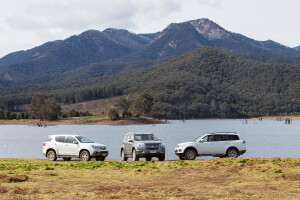Latest Review
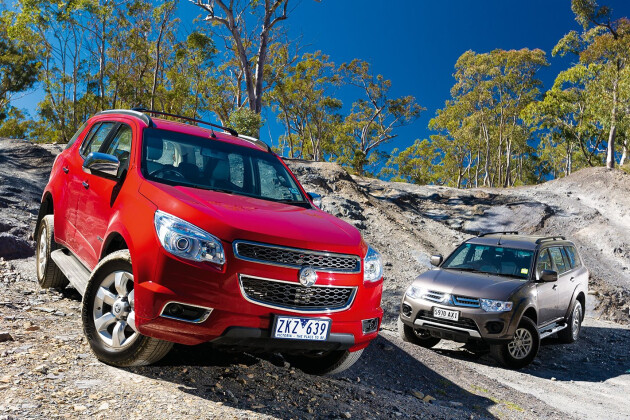
2014 Holden Colorado 7 LTZ vs 2014 Mitsubishi Challenger
Mitsubishi’s Challenger and Holden’s Colorado 7 are both derived from utes, but which has made the more successful transition to 4X4 wagon?
Capable dual-range 4X4 wagons don’t come cheap but both Mitsubishi’s Challenger and Holden’s Colorado 7 are about as affordable as they come.
This article was originally published in the January 2014 issue of 4x4 Australia.
That’s largely due to the fact that both are based on high-volume utes, the Triton and the Colorado respectively, and the associated component sharing saves costs.
Aside from the obvious body and interior differences the major mechanical changes involved in turning the Triton and the Colorado into the wagons you see here are relatively straight forward. You shorten the wheelbase, ditch the rear leaf springs in favour of a coil spring/link arrangement, and swap the rear drum brakes for discs.
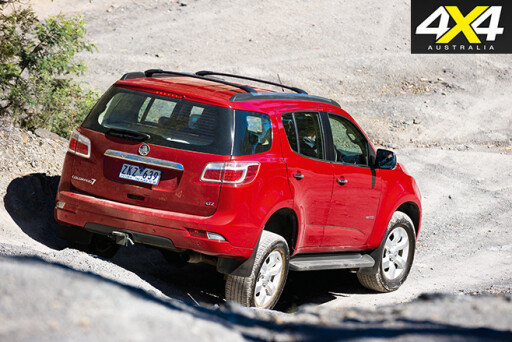 Background
Background
Mitsubishi’s second-generation Challenger first appeared in Australia in late 2009 but was updated in 2011 (when a 2WD model was introduced) and then again in 2012. The most recent facelift occurred earlier this year when the model range was simplified and the seven-seat option was dropped.
The Colorado 7 is far more recent and only appeared in late 2012. Then, in what was a surprise move and only 12 months after its debut, it was upgraded with a power and torque boost and a revamp of the automatic gearbox’s shift protocols, among other changes.
Powertrain Performance
The 2.5-litre four-cylinder turbo diesel that powers the Challenger first appeared in the Triton in 2009, a few months before the Challenger was launched. In the Triton it replaced the long-serving 3.2-litre turbo diesel and, despite the smaller capacity, offered more power and torque, on paper at least. It claims 131kW of power but the torque is rated at 400Nm with the manual and pegged at 350Nm with the automatic.
 The Colorado 7 is powered by what is new Italian VM Motori-designed 2.8-litre four-cylinder diesel. Initially this engine (when mated to the Colorado 7’s auto box) claimed 132kW and 470Nm although the recent upgrade has seen those figures bumped to 147kW and 500Nm.
The Colorado 7 is powered by what is new Italian VM Motori-designed 2.8-litre four-cylinder diesel. Initially this engine (when mated to the Colorado 7’s auto box) claimed 132kW and 470Nm although the recent upgrade has seen those figures bumped to 147kW and 500Nm.
On the road the Colorado 7 is comfortably faster and more responsive than the Challenger and side-by-side rolls-on from low speed see it effortlessly sprint away from the Challenger, its extra power and torque plus its additional gear ratio being more than sufficient to overcome its slight weight penalty. And all that before its engine upgrade.
Not so good is the fact that for an all-new design the Colorado 7’s engine lacks the refinement and noise control of equally new designs. In fact it feels no more refined than the older engine of the Challenger.
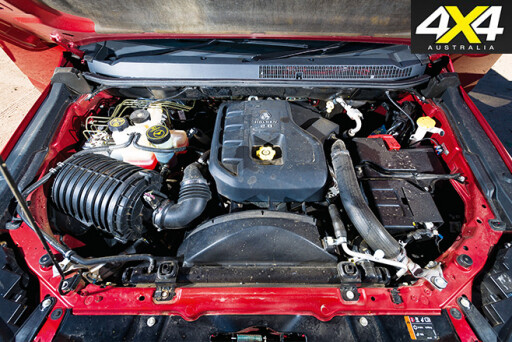 Likewise the Colorado 7’s six-speed auto doesn’t better the older five-speed of the Challenger for refinement or shift quality although thankfully the shift protocols have been tweaked in the recent revamp. And they really needed to be as previously the gearbox was too fussy, unnecessarily shuffling up and down the gears on undulating, give and take roads.
Likewise the Colorado 7’s six-speed auto doesn’t better the older five-speed of the Challenger for refinement or shift quality although thankfully the shift protocols have been tweaked in the recent revamp. And they really needed to be as previously the gearbox was too fussy, unnecessarily shuffling up and down the gears on undulating, give and take roads.
Not much in it for economy with our test returning figures of 11.2 and 11.6 litres/100km respectively. The recent Colorado 7 upgrade has seen the official ADR Combined Cycle figure come down from 9.4 to 9.2 litres/100km so it may do a little better again on the road. The Colorado 7 has an extra eight litres fuel capacity so it terms of fuel range it has a double advantage over the Challenger.
Ride and Handling
While the Colorado 7 wins out on performance and economy, the Challenger has its measure in terms of on-road ride and handling. And this is despite being an older design and having a simpler three-link rear suspension arrangement whereas the Colorado 7 has a more sophisticated five-link arrangement.
Aside from the three-verses-five-link rear these two are very similar, at least on paper: separate chassis; double-wishbone coil-sprung front end; and coil-sprung live axle at the rear.
On the road however the Challenger feels tighter, more agile and offers a more supple ride. In comparison the Colorado 7 feels bigger, more awkward and has what is at times a very unsettling ride. The Holden’s steering also lacks the feel and accuracy of the Mitsubishi.
 It’s not that the Challenger is a highly polished on-road performer, as it’s not. It’s just that the Colorado 7 could and should be better than what it is.
It’s not that the Challenger is a highly polished on-road performer, as it’s not. It’s just that the Colorado 7 could and should be better than what it is.
The Challenger has another significant on-road advantage with its Super Select 4X4 system, which offers the choice of full-time four-wheel drive. The Colorado 7, like the Colorado ute it is based on, has a basic part-time 4X4 system.
On wet bitumen roads, gravel roads and especially on roads that alternate from sealed to unsealed and back again, the set-and-forget benefit of the full-time 4X4 of the Challenger is both a convenience and safety advantage. At the same time the Challenger still has the option of 2WD for those long runs on sealed roads.
Off Road
The Challenger’s star continues to outshine that of the Colorado 7 off road. On paper it has the similar clearance to the Holden but in reality it has more. It also has superior approach and departure angles. It’s also easier to see out of and has better over-bonnet visibility and is therefore easier to place on difficult trails.
 Both the Challenger and the Colorado 7 have reasonable wheel travel, especially at the rear, and both have the benefit of electronic traction control to limit any potential wheelspin. The ETC systems seem equally effective.
Both the Challenger and the Colorado 7 have reasonable wheel travel, especially at the rear, and both have the benefit of electronic traction control to limit any potential wheelspin. The ETC systems seem equally effective.
The Challenger also has a driver-switched rear diff lock, which is a bonus in some situations. However, when the Challenger’s rear locker is engaged it unfortunately cancels the electronic traction control across both the front and rear axles, not just the rear axle, so it’s not always an advantage. Most newer-design factory-fit rear lockers, either automatic or driver-switched, kept the traction control on the front axle active when they are engaged. Still, in the case of the Challenger, it’s better to have the locker than not.
Cabins and Equipment
There is a key difference here and it could be a deal breaker if you are tossing up between these two. At both spec levels the Colorado 7 seats seven. That’s why it’s called a Colorado 7. The Challenger however only has five seats. That’s not always been the case but the seven-seat option was dropped in the MY14 makeover.
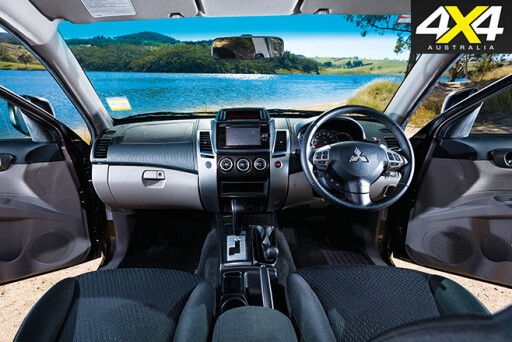 The Colorado 7’s third-row seat is however a poor design. It sits fully proud of the floor and greatly inhibits the functionality of the load space. There’s also little luggage space behind the third row when the seats are folded out ready for use.
The Colorado 7’s third-row seat is however a poor design. It sits fully proud of the floor and greatly inhibits the functionality of the load space. There’s also little luggage space behind the third row when the seats are folded out ready for use.
There’s not much between the second-row seats for comfort or space although the Challenger’s seat is a little wider and better for three adults. Up front the Colorado 7 has the more comfortable seats. The Challenger’s, like those of the Triton, are too close to the floor and lack under-thigh support.
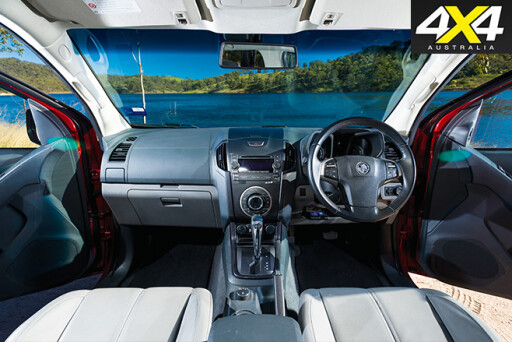 Practicalities
Practicalities
Both score well in terms of practicalities, as they are rugged, relatively simple separate-chassis designs. That’s the ute background working for you.
At base spec both ride on 16s and the bigger wheels of the up-spec models can be swapped for 16s if you so wish. Both have a full-size spare. Both also are rated to tow 3000kg but the Challenger edges out the Colorado 7 for payload. It also has a rear recovery point in addition to the fronts, which are standard on both. The Colorado 7 wins back some points with its inner-guard engine-air intake, a superior arrangement to the Challenger, which sources its intake air from under the bonnet lip.
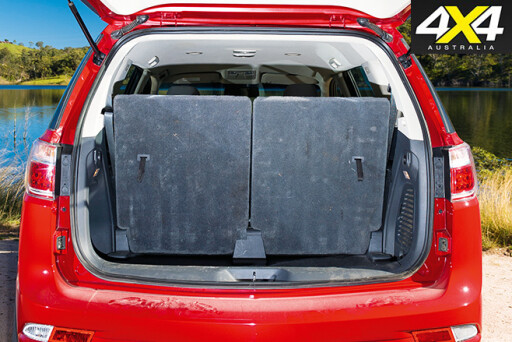 Sum Up
Sum Up
This is pretty simple really. If you need seven seats the Colorado 7 is the only choice. If you value performance with the added bonus of decent fuel economy and a longer touring range than the Colorado 7 should also be your first choice. The Colorado 7 also outscores the Challenger for ANCAP safety.
Put those factors aside however and the Challenger is the more appealing and effective package. It’s certainly the nicer on-road drive and is more capable off road. The Super Select 4X4 system is also a bonus. The Challenger is a little cheaper too and is the only way to get into a manual with this pair, if that is what you want.
Bang for your bucks
The cheapest way to get into either of these vehicles is via a base-model five-speed manual Challenger. Before on-road costs it has a recommended retail price of $42,490. For that you get front, side and curtain airbags, electronic traction and stability control and a four-star ANCAP safety rating. You also get Super Select 4X4, a rear locker, 16-inch alloys, cruise control and manual-adjust cloth seats with seating for five.
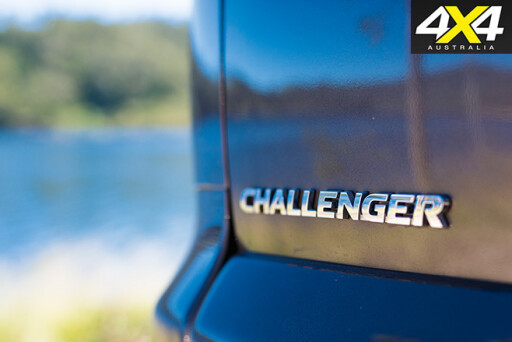 For an extra $2500 you can swap the five-speed manual for a five-speed automatic. For an extra $5000 you can then move up to the LS, which brings leather, electric-adjust front seats, auto wipers and headlights, an up-spec audio system, fog lights and 17s. From there an extra $1900 will get you a touch-screen multi-media/sat-nav system.
For an extra $2500 you can swap the five-speed manual for a five-speed automatic. For an extra $5000 you can then move up to the LS, which brings leather, electric-adjust front seats, auto wipers and headlights, an up-spec audio system, fog lights and 17s. From there an extra $1900 will get you a touch-screen multi-media/sat-nav system.
The Colorado comes in two models, the $46,990 LT and the $50,490 LTZ. Both are auto only and both seat seven in a five-star ANCAP cabin with front, side and curtain airbags. Both also have part-time 4X4 and electronic traction and stability control. The LT gets manual cloth seats, cruise control, and 16s. The LTZ adds leather, electric adjust for the driver’s seat, projector headlights and climate control. Both models a have sat-nav-compatible seven-inch touch screen but the ‘BringGo’ navigation app has to be purchased separately.
Price Guide*
Challenger (manual) $42,490
Challenger $44,990
Challenger LS $49,990
Colorado 7 LT $46,990
Colorado 7 LTZ $50,490
*Prices do not include any options or government and dealer ‘on-road’ charges. Except where noted all models have automatic transmissions.
Specifications: MY14 Mitsubishi Challenger
Engine: 4cyl turbo diesel
Capacity: 2477cc
Power: 131kW @ 4000rpm
Torque: 350/400Nm @ 1800rpm
Gearbox: five-speed manual or automatic
4X4 System: dual-range, full-time (+2WD)
Construction: separate chassis
Front suspension: Independent/coil springs
Rear suspension: live axle/coil springs
Wheels: 16-inch alloys
Tyres: 265/70R16
Kerb Weight: 2019 – 2029kg
GVM: 2710kg
Payload: 681– 691kg
Towing capacity: 3000kg
Seating capacity: five
Fuel tank capacity: 70 litres
ADR fuel consumption*: 9.8 litres/100km
On-test consumption: 11.6 litres/100km
Touring range**: 553km
*Australian Design Rule ‘Combined-Cycle’ claim
**Based on test consumption with a 50km ‘safety margin’.
Specifications: MY14 Holden Colorado 7 LTZ
Engine: 4cyl turbo diesel
Capacity: 2776cc
Power: 147kW @ 3600rpm
Torque: 500Nm @ 2000rpm
Gearbox: six-speed automatic
4X4 System: dual-range part-time
Construction: separate chassis
Front suspension: independent/coil springs
Rear suspension: live axle/coil springs
Wheels: 18-inch alloys
Tyres: 265/60R18
Kerb Weight: 2205kg
GVM: 2820kg
Payload: 615kg
Towing capacity: 3000kg
Seating capacity: seven
Fuel tank capacity: 78 litres
ADR fuel consumption*: 9.2litres/100km
On-test consumption: 11.2 litres/100km
Touring range**: 646km
*Australian Design Rule ‘Combined-Cycle’ claim
**Based on test consumption with a 50km ‘safety margin’.
News
-
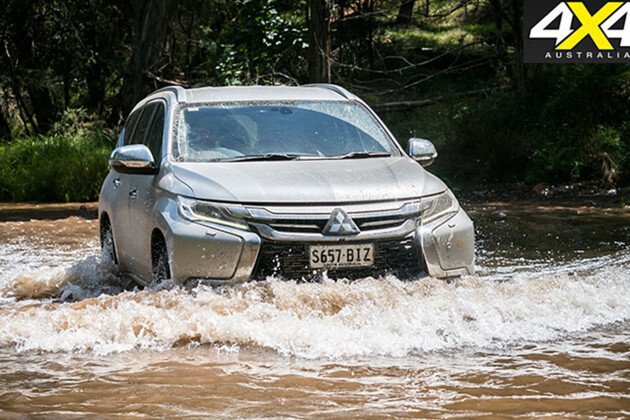 News
NewsMitsubishi recalls Challenger and Pajero Sport models
Mitsubishi issues recall due to tailgate corrosion.
-
Features
Crystal ball: New 4WDs to look for in 2016
The past year has been a big year for four wheel drives, bringing several fresh choices for off-highway touring in 2016.
-
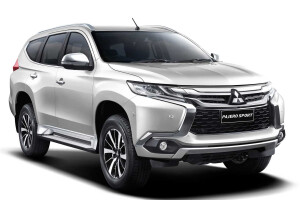 News
News2016 Mitsubishi Challenger unveiled
Mitsubishi Motors has revealed its third-generation Challenger 4x4 SUV in Thailand.
-
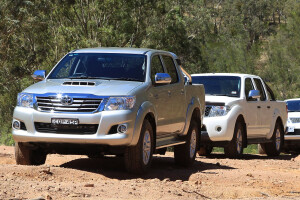 News
NewsTop 10: Australia's best-selling 4x4s in 2015
Fraser Stronach crunches Australia's latest 4x4 sales figures to see what’s hot and what’s not so far in 2015
-
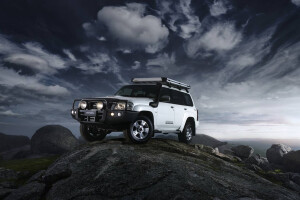
Nissan’s Diesel Dilemma
-
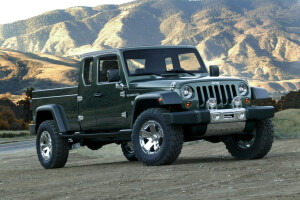
Jeep's global plan


